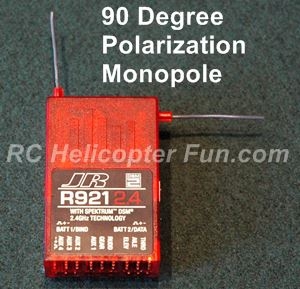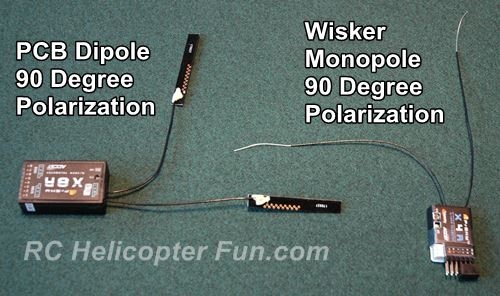Antenna Theory
Rules of Thumb
Strongest when both the Radio & Receiver antennas are parallel to each other.
Weaker when they are perpendicular to each other.
Very weak when pointed ends on, directly at each other.

Diversity
Antenna diversity comes in several flavors. There are two primary ones we should be aware of in our hobby: Polarization Diversity and Spacial Diversity.

Receiver 90 Degree Polarization Diversity
Polarization Diversity is exactly what having both a vertical and horizontal polarized RC antenna will give us.
Not only does this give a better RF radiation pattern out from the TX antennas; when dual diversity is used on the receiver end, it improves the RX's "listening" ability in both horizontal and vertical planes as well.
Bounced and reflected signals that become polarized can also be detected in some instances by having more than one plane of antenna polarization. All RC manufactures suggest 90 degree dual polarization for the best results. I've always followed this myself and have never had any problems.

Examples Of 90 Degree Polarization Diversity
Spacial Diversity is used to separate the two antennas.
Recommend distance of separation by most manufacturers is the full wavelength distance or more. So with a 2.4 GHz radio system, having the RX antennas on board the aircraft separated by about 12cm or more is a good practice if possible.
Further Reading
Last updated
Was this helpful?